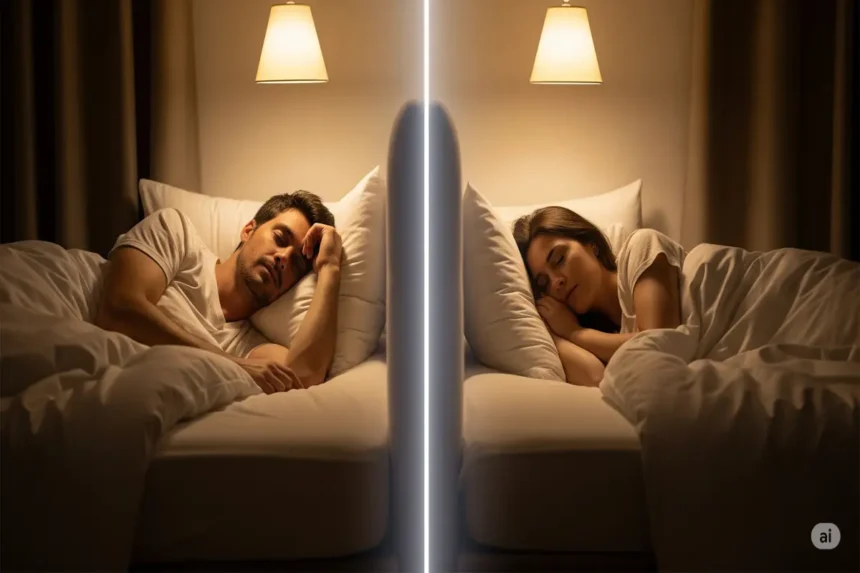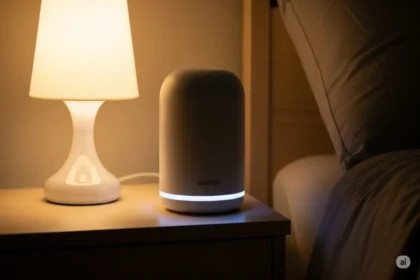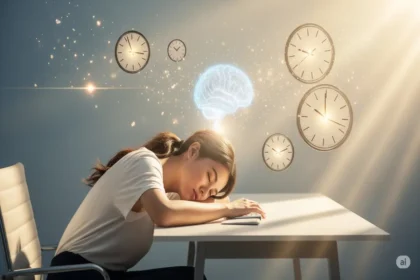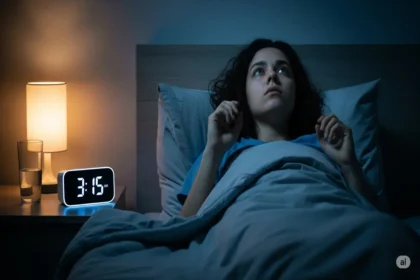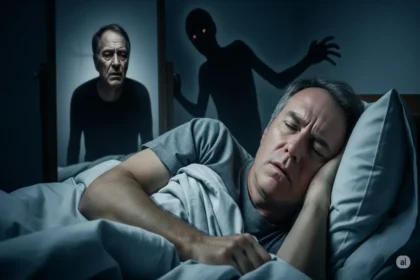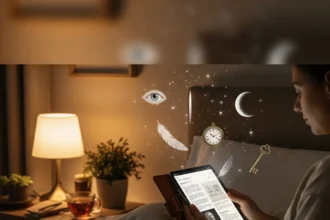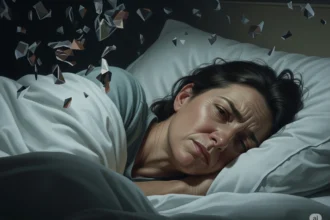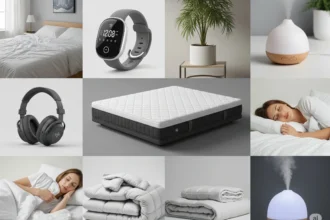Sleep Divorce might conjure images of marital discord, a final, symbolic severing of ties. Yet, in a quiet but growing trend, more and more couples are consciously choosing to sleep apart, not as an act of separation, but as a deliberate, science-backed strategy to cultivate better, more restorative sleep, ultimately strengthening the very fabric of their relationship. This isn’t about falling out of love; it’s about falling into a deeper, more peaceful sleep, and in doing so, rediscovering patience, energy, and affection for one another.
For years, the shared marital bed has been a cornerstone of romantic partnership, a sacred space symbolizing intimacy, comfort, and togetherness. But beneath the surface of this idealized image, countless couples wage a nightly battle against a host of nocturnal disturbances.
Consider the plight of David and Sarah. David, a robust sleeper, was also a formidable snorer, his nightly rumblings often reaching the decibel level of a small engine. Sarah, a notoriously light sleeper, would wake with a jolt multiple times a night, her heart pounding, her frustration mounting with each resonant snort. Her mornings were a haze of fatigue, her patience threadbare, and the once-joyful banter with David often devolved into snappy remarks. David, though oblivious to his snoring, found himself waking up feeling unrested, his own sleep quality subtly eroded by Sarah’s restless movements and the underlying sleep apnea that fueled his noisy breathing. Their shared bed, once a haven, had become a source of silent resentment and chronic exhaustion. After a particularly tense morning, they decided, almost reluctantly, to try separate bedrooms. The initial awkwardness was palpable, but within days, a profound transformation occurred. Sarah awoke feeling refreshed for the first time in years, and David, sleeping soundly, found his daytime energy renewed. Their irritability vanished, replaced by a rediscovered tenderness and humor. Their “sleep divorce” didn’t push them apart; it created the necessary space for each to thrive individually, allowing them to reconnect more deeply when awake and truly present.
The Science of Shared Sleep Disruption
The concept of “sleep divorce” is, at its heart, a radical act of self-care within the context of a partnership. It’s a recognition that individual sleep health is not a luxury, but a fundamental pillar of overall well-being, and that compromising it for the sake of a traditional ideal can have far-reaching negative consequences for both individuals and the relationship itself. The scientific rationale underpinning this trend is compelling, shedding light on the myriad ways a shared bed can inadvertently sabotage restorative sleep.
Sleep, in its essence, is a deeply personal and often vulnerable physiological process. Our individual needs, preferences, and unique biological rhythms are incredibly diverse. One partner might be a quintessential night owl, whose peak alertness and creative energy flourish in the late hours, while the other is an unshakeable early bird, whose body clock naturally nudges them awake with the first hint of dawn. Beyond these chronotypes, there are individual preferences for sleep environments: one might crave a cool, almost chilly room, while the other shivers without extra blankets. Mattress firmness, light sensitivity, and even the subtle hum of a fan can be sources of contention. Then, of course, there are the more pronounced sleep disturbances: chronic snoring, restless leg syndrome, sleep apnea, or even the simple, unavoidable movements of one partner getting up for a bathroom break. Each of these seemingly minor discrepancies or disruptions can chip away at sleep quality, leading to what sleep scientists term “sleep fragmentation” and, ultimately, “sleep debt.”
Fragmented sleep, even if you technically spend the recommended 7-9 hours in bed, is fundamentally less restorative than continuous, uninterrupted sleep. When sleep is constantly broken—whether by noise, movement, or light—your brain struggles to effectively cycle through its crucial stages: NREM (Non-Rapid Eye Movement) and REM (Rapid Eye Movement) sleep. NREM sleep, particularly the deep N3 stage (also known as slow-wave sleep), is vital for physical restoration, cellular repair, hormone regulation, and the consolidation of declarative memories (facts, figures, events). REM sleep, on the other hand, is a more active, dream-rich stage crucial for emotional processing, problem-solving, and integrating new information with existing knowledge, fostering creativity. If these intricate sleep cycles are repeatedly interrupted, you might wake up feeling as if you haven’t slept at all, leading to persistent daytime fatigue, impaired cognitive function (difficulty concentrating, poor decision-making), heightened emotional reactivity, and increased irritability.
Common Nocturnal Culprits
Several specific issues frequently drive couples to consider separate sleeping arrangements:
The Snoring Saga
Snoring stands out as perhaps the most pervasive and disruptive culprit in shared sleeping arrangements. Affecting an estimated 45% of adults occasionally and 25% regularly, snoring can produce sounds ranging from a gentle rumble to decibel levels comparable to a vacuum cleaner (around 70 dB) or even a jackhammer (over 100 dB). A significant study published in the journal Sleep and Breathing in 2005 highlighted that bed partners of snorers often experience substantial sleep deprivation, reporting more daytime sleepiness, fatigue, and even increased risk of hypertension compared to those whose partners don’t snore. This isn’t just an annoyance; it’s a public health issue for the non-snorer. Moreover, snoring itself is often a symptom of obstructive sleep apnea (OSA), a serious medical condition where breathing repeatedly stops and starts during sleep. OSA is linked to a heightened risk of heart disease, stroke, high blood pressure, and diabetes. In cases where snoring is severe or indicative of OSA, separate sleeping arrangements can provide immediate, life-changing relief for the non-snorer, while simultaneously creating an environment where the snorer can seek proper diagnosis and treatment without the added pressure of disturbing their partner.
Mismatched Sleep Schedules
Beyond the rhythmic rumble of snoring, mismatched sleep schedules present another significant challenge. Consider a couple where one partner works demanding night shifts as a nurse, returning home in the early morning, while the other maintains a traditional 9-to-5 office job. The act of one person coming to bed late, turning on lights, or getting up early to prepare for work can create a cascade of noise, light, and movement disturbances that profoundly disrupt the other’s sleep. Research from the University of Pittsburgh has consistently demonstrated that even subtle disturbances, such as light changes or minor movements, can trigger micro-arousals in the brain, pulling individuals out of deeper sleep stages and impacting overall sleep quality, leading to increased inflammation and elevated stress hormones. For couples navigating vastly different routines, separate sleeping spaces often emerge as the most practical and effective solution to ensure both partners achieve uninterrupted, high-quality rest.
The Temperature Tug-of-War
Temperature preference is another often-overlooked yet potent source of nocturnal friction. One partner might be a “hot sleeper,” naturally running warm and preferring a cool room with minimal blankets, while the other feels perpetually cold and seeks warmth under layers of duvets. This seemingly minor physiological difference can lead to a nightly tug-of-war over thermostats, windows, and bedding, creating discomfort and disrupting sleep for both. Separate beds, or even separate rooms, allow each individual to meticulously optimize their sleeping environment to their unique physiological needs, fostering a sense of comfort and control that is essential for deep sleep. This extends to mattress preferences as well; one partner might need a firm mattress for back support, while the other prefers a softer, more yielding surface. Compromising on such fundamental comfort can severely impact sleep quality.
The Unexpected Benefits of Sleeping Apart
The benefits of “sleep divorce” ripple far beyond the mere elimination of disturbances. When both partners consistently achieve restorative sleep, the positive effects permeate every facet of their relationship and individual lives.
Enhanced Mood and Reduced Irritability
One of the most immediate and noticeable changes is a significant improvement in mood. Chronic sleep deprivation is a known precursor to increased irritability, anxiety, and even symptoms of depression. When both partners are well-rested, they approach each other with greater patience, empathy, and a more positive outlook. Arguments become less frequent and more constructive, as neither person is operating from a place of exhaustion-induced frustration. This creates a more harmonious and supportive home environment.
Improved Cognitive Function and Communication
Sleep is crucial for optimal brain function. When sleep is fragmented, cognitive abilities like concentration, memory, and problem-solving are impaired. By ensuring uninterrupted rest, “sleep divorce” allows both partners to experience enhanced cognitive function during the day. This translates into clearer communication, better decision-making, and a greater capacity to engage meaningfully with each other. Misunderstandings, often fueled by mental fogginess, decrease, leading to more effective and satisfying interactions.
Rekindled Energy and Intimacy
With restored energy levels, couples find themselves more willing and able to engage in shared activities, pursue hobbies, and, crucially, maintain intimacy and connection during waking hours. Dr. Wendy Troxel, a senior behavioral and social scientist at RAND Corporation and author of “Sharing the Covers: Every Couple’s Guide to Better Sleep,” is a prominent advocate for prioritizing individual sleep health within a partnership. She eloquently argues that this is not an act of distancing, but a radical form of self-care that ultimately fortifies the relationship. Dr. Troxel emphasizes that intimacy is not solely, or even primarily, defined by sharing a bed. Instead, true intimacy blossoms from quality time, shared experiences, open and honest communication, and mutual respect during waking hours. For many couples, the act of sleeping apart paradoxically frees up the mental and emotional bandwidth to truly connect when they are awake and alert, rather than being perpetually exhausted, resentful, or prone to arguments fueled by sleep deprivation.
Navigating the “Sleep Divorce” Conversation
The decision to embark on a “sleep divorce” is a deeply personal one, requiring open, honest, and empathetic communication between partners. It is absolutely essential to frame this discussion not as a rejection of intimacy or a sign of relationship trouble, but as a mutual commitment to health, well-being, and the longevity of the partnership.
Couples who successfully navigate “sleep divorce” often find creative and meaningful ways to maintain intimacy and connection: cuddling and spending quality time in one bed before one partner moves to their separate space, having “sleepovers” on weekends, or simply ensuring dedicated, screen-free quality time together during the day. Some couples even find that the anticipation of shared waking moments becomes more exciting when the pressure of shared sleep is removed. The ultimate goal is to find a solution that works for both individuals, allowing each to achieve optimal rest without sacrificing the emotional connection that binds them. It’s about redefining what intimacy looks like for their relationship, rather than adhering to a one-size-fits-all societal norm.
Conclusion: A New Paradigm for Rest and Relationship
The rising popularity of “sleep divorce” is a clear reflection of a growing societal awareness regarding the critical, often underestimated, role that sleep plays in our overall health and happiness. It challenges the deeply ingrained, romanticized notion that couples must share a bed to be truly close, replacing it with a more pragmatic, health-conscious, and ultimately more sustainable approach to partnership. By understanding the intricate science of sleep and acknowledging the profound impact of individual differences, couples are empowering themselves to make choices that lead to more restorative nights, more harmonious days, and ultimately, stronger, more resilient, and healthier relationships. It is a powerful testament to the idea that sometimes, a little distance at night can, quite beautifully, bring you closer than ever before. It’s a bold step away from outdated conventions and towards a future where personal well-being and relational harmony can coexist, nurtured by the profound power of truly restful sleep.
Disclaimer: The information provided in this article is for general informational purposes only and does not constitute medical advice. It is not a substitute for professional medical advice, diagnosis, or treatment. Always seek the advice of your physician or other qualified health provider with any questions you may have regarding a medical condition. Never disregard professional medical advice or delay in seeking it because of something you have read on this website.

